Nostalgia: The Automat
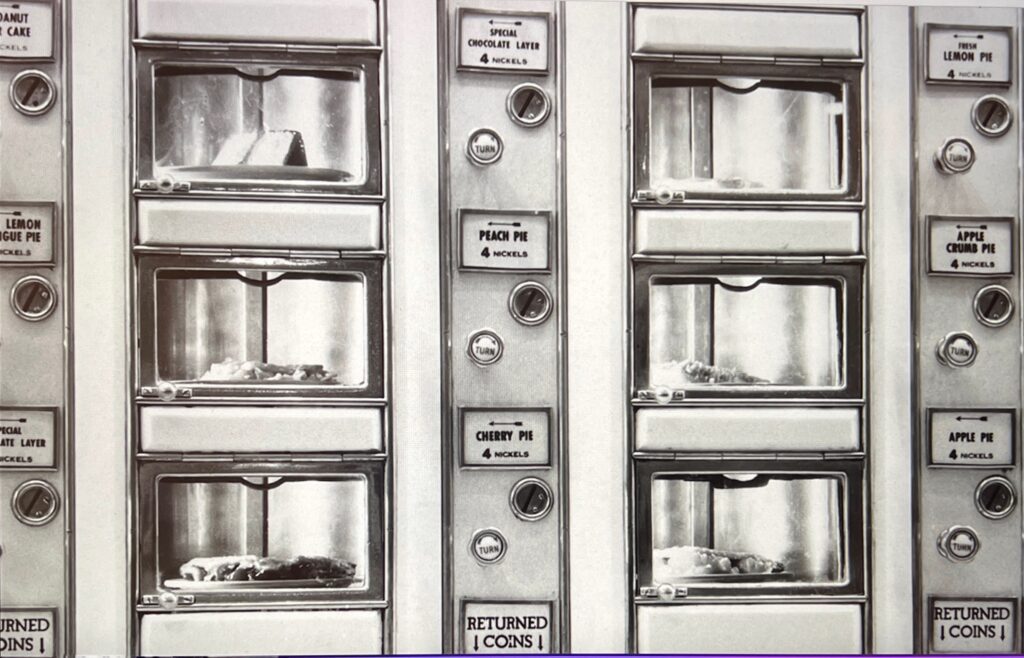
New York City / Philadelphia history.
Recently, a documentary was made called, The Automat, which was available in several movie theaters scattered here and there as well as various organizations having private showings online which were not easy for everyone to access.
You can now, whether you are an Amazon Prime member or not, access the movie and rent or buy it. It is well worth the few dollars. “A charming, fascinating look at one of the first and most unique restaurant chains in America with Mel Brooks, Carl Reiner, Ruth Bader Ginsburg, and Colin Powell.”
It is a terrific documentary with a lot more info and nostalgia than what one might think: It touches on the history and the evolution, and how “progress” doesn’t always bring change for the better. Ultimately, the Automat, which originated in Philadelphia and was the brainchild of the pairing of Mr. Joseph Hart (who hated NYC and preferred to remain in Philly) and Mr. Frank Hardart. They were two wonderful gentlemen who were loyal to their employees, who treated them like family and who received the same love and respect in return. That mutual appreciation was tantamount for the many years in the business.
After the war, women entered the workforce and needed a place for a quick lunch. This boosted the customer base, however, the suburbs were being developed along with railroads and highways, and many families began to leave the city for the American dream: a house of their own.
Women left their jobs in Manhattan and stayed home to raise children. Men, who might have stayed late in the city to work, who would frequent the Automat for dinner, were now catching the commuter lines and going home.
People left the Automat. They abandoned the little doors, nickels and lemon meringue pie for cheap, fast burgers: fast food was the new novelty and pushed down Automat sales, despite the food being incomparable. And, the first omen of the end was the advent of Chock Full O’ Nuts which pushed in on the territory of a quick cup of coffee and a sandwich.
Competition.
And, one by one the Automats closed.
The Automats were cathedral-like palaces, especially during the Great Depression. The interiors were cavernous, they gleamed with marble floors and shiny, white, carrera marble table tops. The coffee spigots were redolent of the dolphins in Roman fountains that Mr. Horn visited on vacation: They miraculously spewed coffee for the price of a nickel and at the last moment gave the cup a dash of cream.
The hungry could walk in wearing furs or tatters. Anyone of any background, color, status, or class, could go in and enjoy a meal. Sometimes those in poverty would grab a free cup of hot water and even put ketchup in it. As years past and the client base diminished before the final demise, vagrants and homeless would frequent the Automat, sometimes staying all day, out of the elements. The philosophy of compassion never waned and the unwanted were never thrown out, but this made it highly unpleasant to those who still came in to enjoy a meal.
The bottom right photo is of my Union Square venue, in the shadow of the El train; the eaters at the window are looking out on the Third Avenue El (the elevated train which was taken down in the 1950s. I would have been very young at the time.)
Photos are screenshots from the documentary.
So, what was “The Automat“?
It was an incredible, iconic, inventive, automatic means to obtaining an excellent drink — the best coffee — to an excellent meal for a very reasonable price. Something that was very important for the times was the fact that there was NO TIPPING, it was not needed. This was a boon during The Great Depression. You would bring your dollar bills to the nickel thrower, a woman in a booth who could give you change for nickels in a flash and who was likely able to skillfully fish the nickels out of their container, and, just by touch, pick up twenty and hand them over. That act was just the beginning of the magic.
The patron would then peruse the choices, by peering through little doors with glass windows, and once a choice was decided upon, be it a meal or dessert, one would press a button, insert the required number of nickels, the door would unlock and lift up and the food would be released. That was more magic. Behind the scenes there were workers cooking and stocking the windows, twirling and filling the stainless steel drums.
The gimmicky approach was a joy to both children and adults alike.
Before it’s ultimate demise there were ad campaigns to try to whip up interest and re-establish the Automat as a food contender. Unfortunately, there were too many factors to keep it sustainable. The brilliant ads touted the food and played down the lack of atmosphere. I have the one on the left stashed away in the depths of the basement. Robert, who saw the value in everything, especially nostalgia, took it from a bus or a subway, likely in the 1970s.
The Automat was unveiled in 1902 and was welcoming to immigrants who couldn’t read English: it had pictorial instructions for the procedure to obtain food. Thus, immigrants felt like welcomed, new Americans.
The last Automat to close was in 1991. As a child I knew the one that was closest to Union Square, 14th Street in Manhattan. But as an adult, I knew the one that ended the Automat’s reign: It was on East 42nd Street and Third Avenue, near my graduate school, where, in 1970, it was the place where I would go before my classes.
I am going to leave you with visuals and videos. Enjoy.
It was a wonderful time.
My time.
Go! Rent the documentary!
The Automat in Times Square
Tha Automat was the backdrop for many movies. It was a major part of the New York City zeitgeist.
Article about Julian’s Pool hall upstairs
Movie: https://www.youtube.com/watch?v=ZrbyqUOObdU
Excellent history: https://www.youtube.com/watch?v=HCSwdUImmf8
In the movies:
Jean Arthur, 1937, Easy Living
Tallulah Bankhead, 1957
https://www.youtube.com/watch?v=HJgjbHJNR6M
Video on a book about the Automat and exhibit, Marianne Hardart, Lorry Diehl
And my fave with Doris Day, Audrey Meadows and Cary Grant, That Touch of Mink
https://www.youtube.com/watch?v=nTqjO-dHTmE



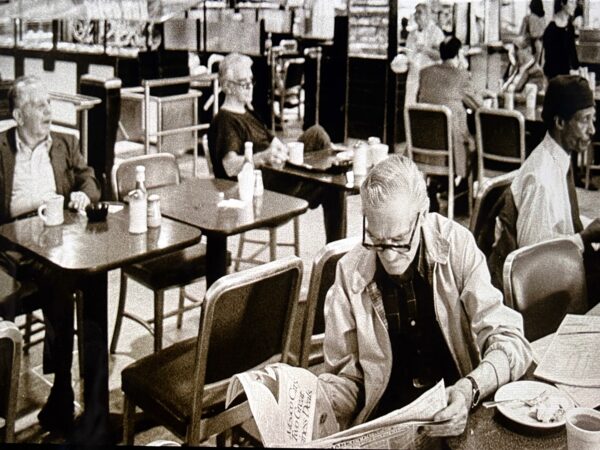
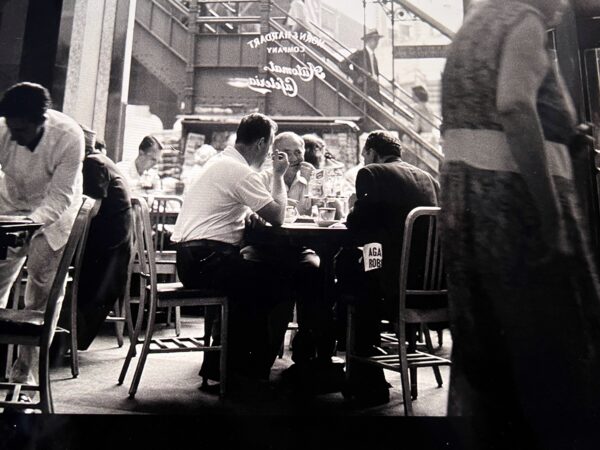



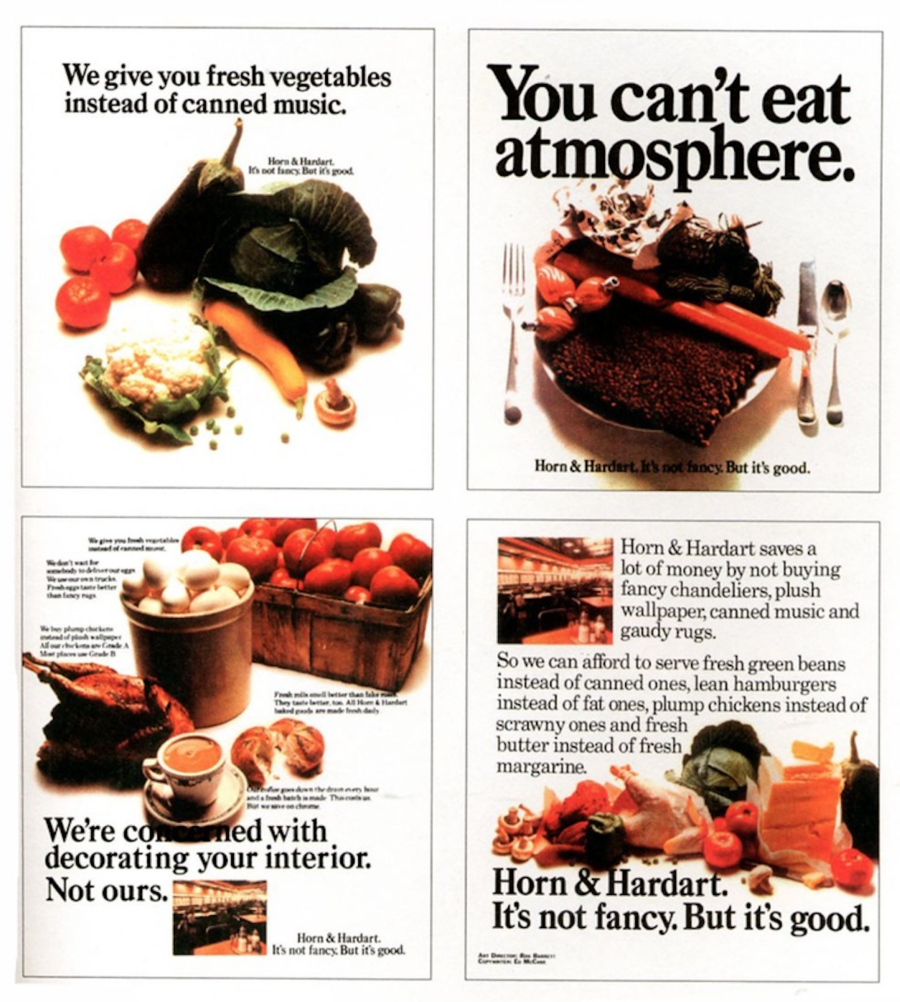
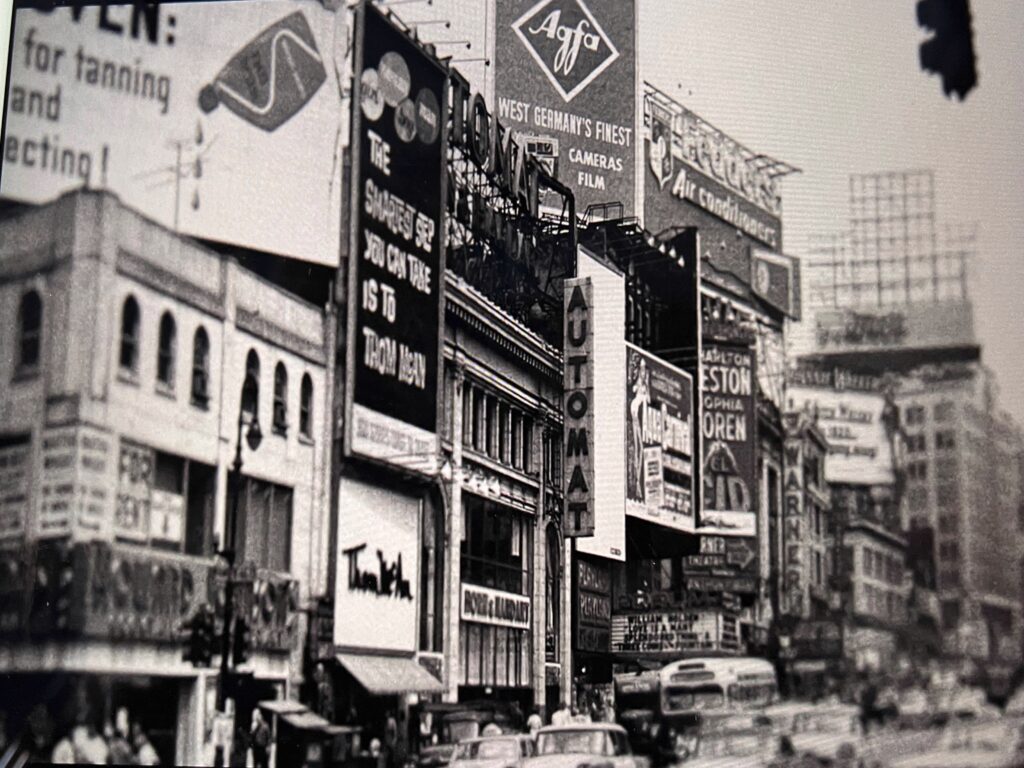
Someone should bring them back
Wonderful. And I loved Tallulah Bankhead. What a classic dame.
My Aunt Rita used to take me to Horn & Hardart as a special treat when I was a child. The technology fascinated me, I loved the little windowed boxes out of which came all sorts of delicious food and I was in awe of the palatial surrounding. In 2010 my sister, Bonnie, her husband, Gary, and I went to a museum to see the H & H Automat exhibit. What a nostaligic and charming return to yesteryear. Your film clips were so much fun to watch. The H & H has the golden sheen of a well-worn memory.
It was a great place to eat. I remember the two hands coming from nowhere to refill an empty space where a piece of pie or a sandwich had been. This always fascinated me. We went to the Horn and Hardart on Northern Blvd. And Parsons Blvd. My parents and I would dine there on the weekend. Great food!!! Great memories!!! Wonderful reminiscence of a beloved place that cared deeply about its customers.
A beautiful tribute to a much loved unique establishment, lost to history, but lives on in our hearts and in documentation by artists like you, Sue!
I noticed that Friendly’s is also going into history…
There was a Horn & Hardart restaurant in Fresh Meadows, near my childhood home. It had menus and real waitresses. My family would go there often for dinner. I didn’t know about Automats until later, as I explored the city and had friends from other neighborhoods.